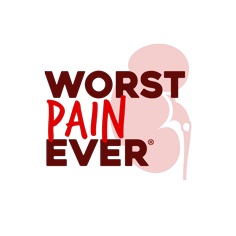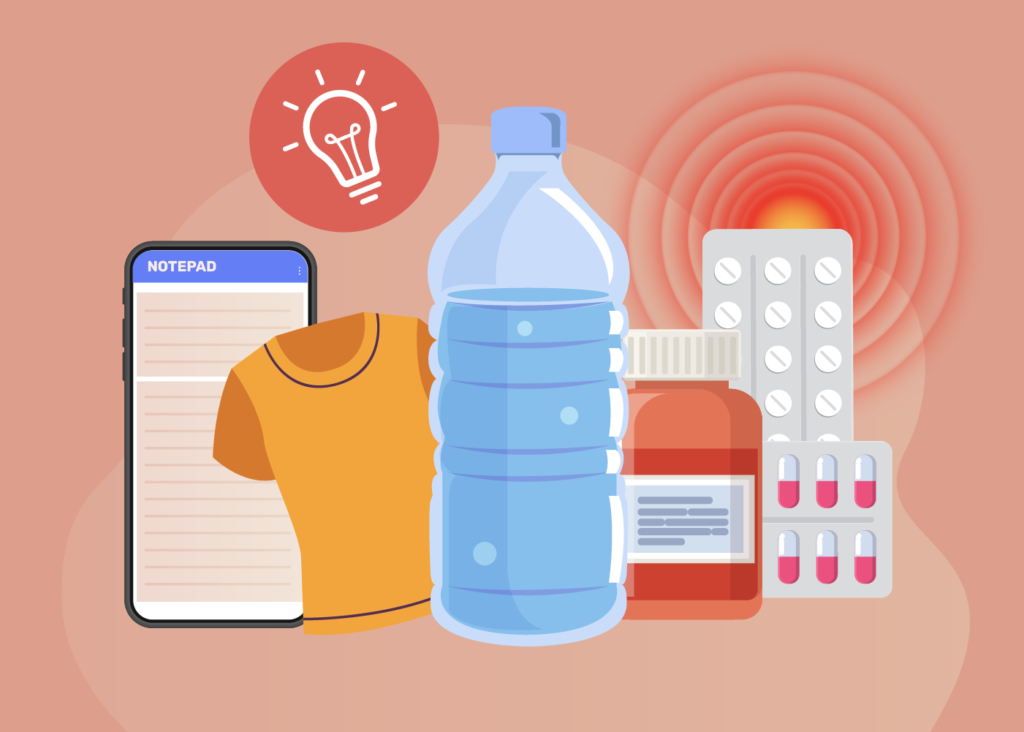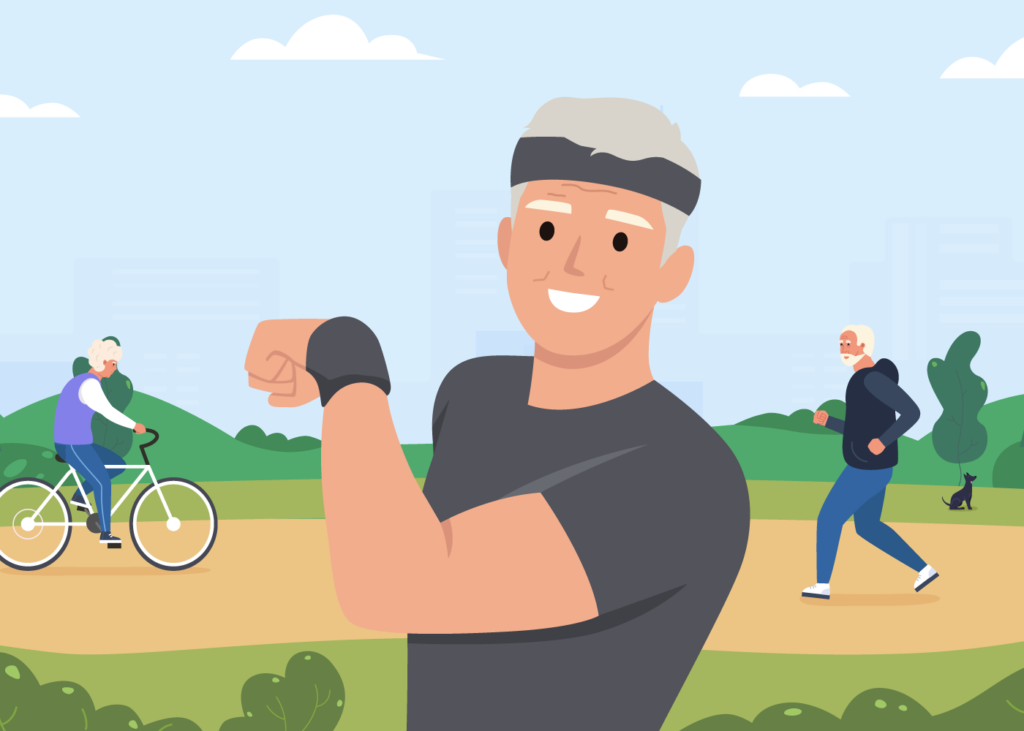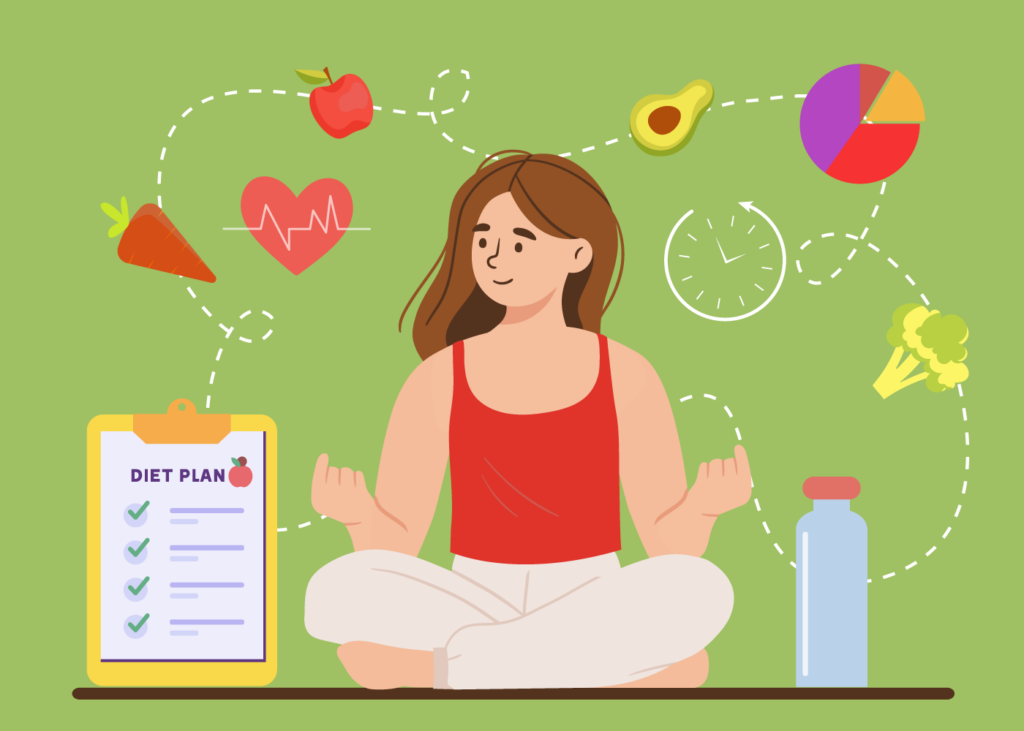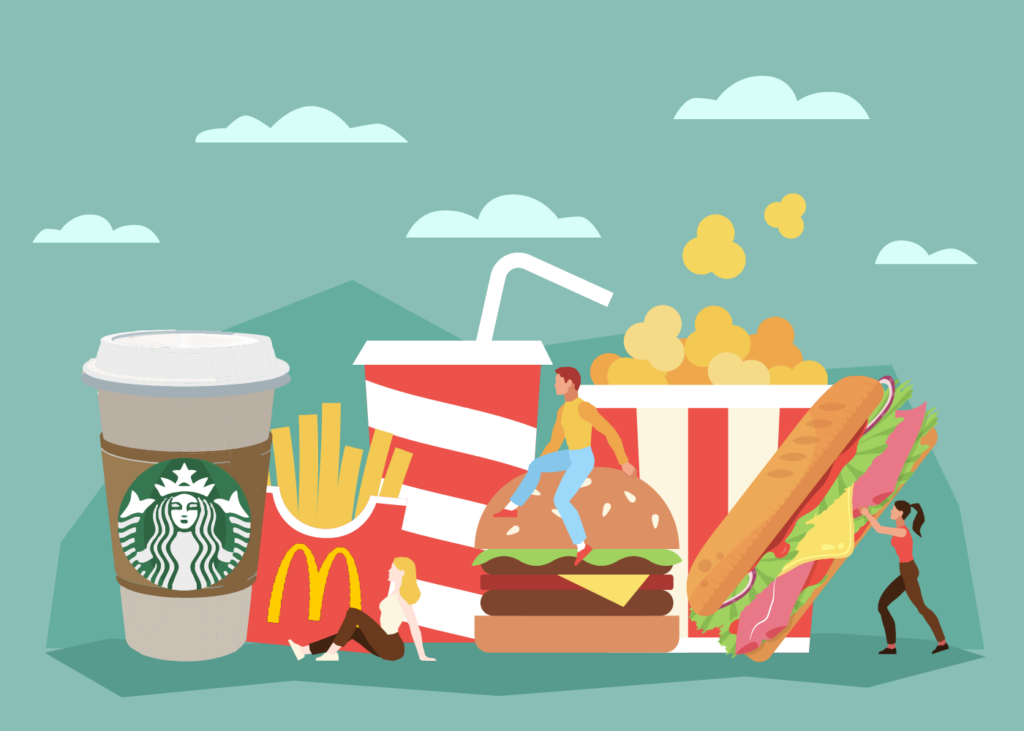Kidney stone and stent pain can be exhausting and disruptive to daily life – but it can be managed! Here are some things you can do to relieve the pain:
1. Pain medication
This might seem like a no-brainer, but imagine having to pass a stone and realizing you’re out of Advil!
For small stones, your doctor may prescribe pain medication such as ibuprofen (e.g. Advil) or naproxen sodium (e.g. Aleve). Keep these close by or in a small, portable pouch that you can take on the go – you never know when the pain will hit!
2. Comfy clothes
Stents and tight pants do NOT go together. Since stents can cause pain in the bladder, abdominal, groin or back area1, we recommend wearing loose, breathable clothing whenever possible. This will also prevent you from losing too much water from sweat, particularly if you’re finding it difficult to keep up with your recommended water intake.
Cotton, linen, and silk are amongst some of the most breathable and cooling fabrics out there – perfect for providing your body much-needed ventilation, especially during the summer months!
3. Plenty of water
You’ve probably already heard this mantra a thousand and one times, but remember to “drink, drink, drink!” (Water, that is). Kidney stones tend to form when there aren’t enough fluids to dissolve salts such as calcium oxalate, which is responsible for calcium oxalate stones – the most common type of kidney stone.
To ensure you’re making 2.5 liters of urine per day, keep your water bottle filled at all times. A smart water bottle may also help, as they provide you with timely reminders to drink up. If you’re often the road, try to have a bottle of water stocked in your car, just in case!
4. Heating pads and massages
These aren’t only for the winter months or for period cramps! Studies have shown that heat can ease pain, blood flow, inflammation and muscle spasms1, so you may want to consider getting some heating pads for kidney stone pain relief.
Heating pads or hot water bottles are small and easy to shift to wherever you feel pain, but if you’re out of heating pads (they’re not the most popular commodity during the summer months), a bath or shower with warm water (92-100°F) will work just as well2.
Like most kidney stone warriors out there, if you’re feeling pain in your lower back, massages may provide short-term relief. If you don’t have a hand-held or electronic massager at home, foam rollers also work!
5. Notepad
As a kidney stone warrior, a notebook or notepad app on your phone will be your best friend. Whether you’re a first-time or recurring stone former, it’s always a good habit to log down your symptoms and questions to ask your doctor before your appointment.
Once you’ve got your diagnosis, it will also come in handy for making lists of medications and tracking how often you drink water and urinate. All this data will then help your urologist better tailor treatment plans for you.
Kidney stones are the indeed worst pain ever, but we hope these tips will help tide you through even the most unbearable of days.
For more diet and lifestyle advice, check out our article with Dr. Kymora on how to stay stone-free: https://www.worstpainever.com/interview-with-dr-kymora-how-to-stay-stone-free/
Sources:
- Betschart, P., Zumstein, V., Piller, A., Schmid, H., & Abt, D. (2017). Prevention and treatment of symptoms associated with indwelling ureteral stents: A systematic review. International Journal Of Urology, 24(4), 250-259. https://doi.org/10.1111/iju.13311
- Should You Use Ice or Heat for Pain? (Infographic). Cleveland Clinic. (2020). Retrieved 4 August 2022, from https://health.clevelandclinic.org/should-you-use-ice-or-heat-for-pain-infographic/.
